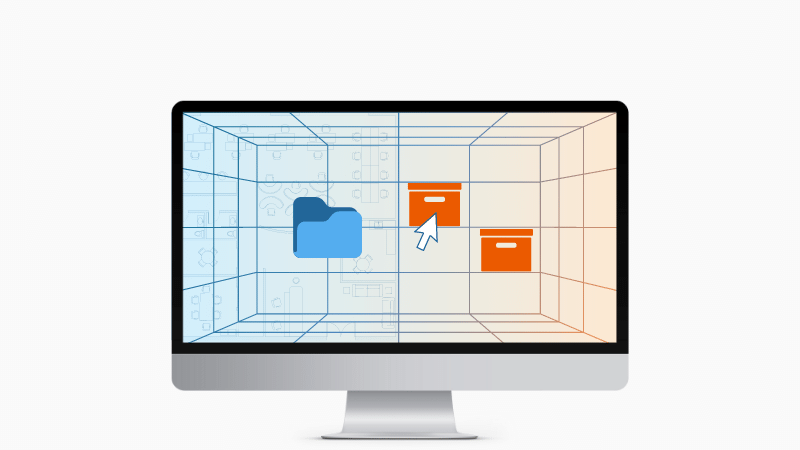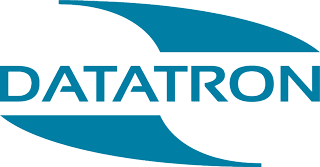
Modern Records Management
Contents
What is records Management?
What is a Records Management System
Modern Records Management Challenges
Is Records Management Different to Document Management?
What is Records Management?
Records management is the practice of storing, organising, preserving, and eventually destroying business documents.
A records manager ensures adherence to regulatory guidelines, mitigates compliance risks and maintains the standard of record-keeping.
What is a Records Management System?
A records management system combines specialised software and processes to facilitate compliant records management within an organisation. It defines document control procedures and methods for creating audit trials of record activity.
A records management system should be tailored to the requirements of your industry and align with your business goals, forming the foundation of an organised, efficient, and forward-thinking enterprise.
Modern Records Management Challenges
Scale
The volume of information processed daily is constantly growing. Meeting this growth with infrastructure can lead to diminishing returns.
Remote Access
Adding remote access to archives can require technological change, re-training, and more extensive compliance checks.
Technological Change
Rapid technological change increases the risk of documents becoming siloed on old devices, without the means of transfer.
Varying formats
Large format, microfilms, email, even post-it notes; information comes in all shapes and sizes, all need stored correctly.
Document Interdependence
Filing documents in a way that shows interconnectivity becomes more difficult as volume increases.
Version Control
As records change overtime, the most up-to-date form of a record must be the one pulled for use.
Changing Retention Schedules
Evolving data privacy legislation puts records at risk of being held too long and fines for non-compliance.
Demonstrating Compliance
Demonstrating compliance to regulatory bodies and customers, requires records to be handled transparently and securely.
Is Records Management different to Document Management?
Document Management
Document Management is a holistic approach to handling the entire lifecycle of information in an organisation, encompassing everything from document creation to version control, collaboration, and eventual disposal.
Document Management Systems offer features like data capture and workflow automation to streamline processes, improve collaboration, reduce manual tasks, and ensure regulatory compliance.
Records Management
Records Management is the denomination of document management that focuses explicitly on storing, retaining, and disposing of records throughout their lifecycle, emphasising structured and compliant information storage rather than the creation or collaboration.
What is Digital Records Management?
Digital records management involves the process of digitising physical records for archival and enriching them with structured metadata.
Metadata boosts the efficiency of searching and grouping of records. By embedding metadata, organisations ensure that each record's context, origin, and significance are retained over time, contributing to the overall integrity and authenticity of the archive.
The record's authenticity is demonstrated through audit trails, which track document changes and ensure compliance with regulations.
What are the Advantages of Digital Records?
Standardised Format
Digitised records share a standardised format. This prevents data sprawl and allows links to be made between documents with various original formats.
Version Control
Version control tracks how a record changes over time to maintain an accurate historical record and prevent data loss. The entire document lifecycle can be stored without wasted space or paper usage.
Access and Security Control
Access controls ensure that only authorised personnel can view, modify, or delete certain documents.
Workflow and Automation
Digital records integrate with other business applications, such as CRMs. This means databases can update automatically when new information is archived.
Audit Trail and Reporting
Audit trails track changes and access, enabling organisations to demonstrate compliance with regulatory requirements and provide data for internal or external audits.
Eco-Friendly
Going digital reduces an organisation's carbon footprint, aligning with corporate sustainability initiatives.
What is Hybrid Records Management
Hybrid solutions are game-changing for dealing with records management challenges. Hybrid Records Management combines physical and digital document management into one flexible, agile, cost-effective solution.
Why Hybrid?
Hybrid empowers businesses to follow convenient transformation schedules or digitise on-demand as needed. This spreads the cost of transformation and allows you to introduce other technologies that integrate your digitised legacy records with day-forward document management processes.
This approach is ideal for pivoting from physical document management to Electronic Document Management while ensuring uninterrupted business operations.
How Hybrid Records Management Works
Step 1: Archive Transfer
Your records are moved to a secure location and an audit trail begins to document the journey. ISO and BS standards ensure records remain confidential and accounted for throughout the transfer process.
Step 2: Digitisation
Once your scanning schedule is outlined, physical records can undergo digitisation. Once scanned your records are structured to form a searchable electronic archive.
Step 3: Request
A digital record can be accessed online by authorised users. The audit trial is updated with a record of access and actions taken on the document.
When delivering physical requests, control sheets and audit trails are updated once a record leaves the archive and again to show its return.
Step 4: Retention
Digital records are assigned retention schedules, based on their content or document type. Once retention is at an end, documents can automatically be routed for destruction.
Your Records Management Journey
Datatron can support you on your records management journey.
With the expertise to handle large-scale digitisation projects, Datatron offers a complete service that caters to the unique needs of both public and private sector organisations.
Our experienced team can guide you through the entire process, from document scanning and indexing to secure cloud storage and user-friendly access interfaces.
Get in touch today!

.jpg?width=800&height=77&name=VRM%20BREAK%20(1).jpg)